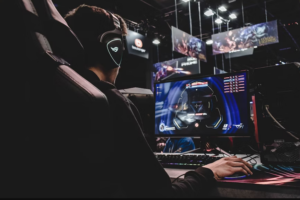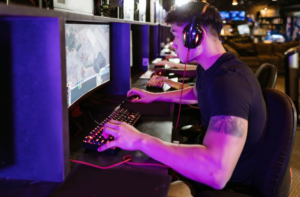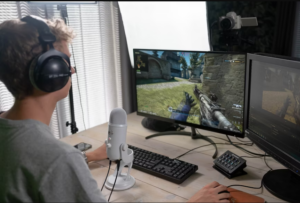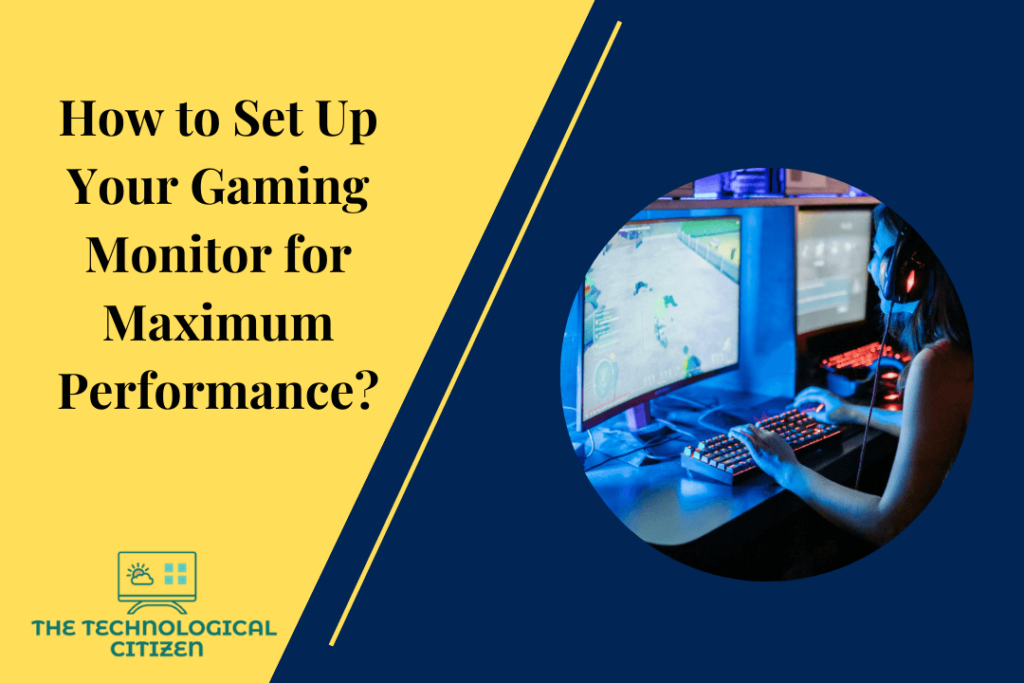A monitor can break or make your total gaming experience. Even if you have an expensive gaming monitor, using it without optimizing it would not give you the desired results. On the other hand, with a properly optimized low-cost gaming monitor, you can have a great gaming experience.
There are many aspects that a gaming monitor should be optimized for. Some of them are color calibration, refresh rate, etc. The article below attempts to provide information on how to set up your gaming monitor for maximum performance.

How do I Maximize My Monitor Settings?
You can maximize your monitor settings by fine-tuning certain vital features of the device. Some of the popular ones are given below.
1. Refresh Rate
If you want to maximize your monitor’s performance, refresh rate is a crucial feature to consider. Refresh rate means the number of times by which the gaming monitor updates the image on the screen. The measurement unit of refresh rate is Hertz.
It is always ideal to keep the monitor at the highest refresh rate. Monitors with high refresh rates ensure smooth and flawless images onscreen, which provides a better gaming experience.
Motion blur is a common issue faced by gamers. You can avoid such performance issues using a monitor with high refresh rate settings.
Usually, gaming monitors maintain refresh rates like 144 Hz, 120 Hz, and 60 Hz. But specific monitors are capable of going 240 Hz and beyond.
2. Resolution Settings
Resolution is an essential feature of a gaming monitor. It means the number of pixels that are present on the screen. The resolution rate decides the clarity and accuracy of the images onscreen.
You have to calibrate your resolution if you want to maximize the performance of your gaming monitor. You must check for the highest resolution your monitor can display and adjust it accordingly.
While calibrating the resolution, ensure the monitor’s graphics card has enough processing power to support the resolution. Also, you must consider the distance you have set up the monitor while calibrating the resolution.
The common resolutions available are 1080 pixels to 4K pixels. Recently, advanced gaming monitors with higher than 4K resolutions were introduced in the market.
3. Aspect Ratio
The aspect ratio of a gaming monitor is the ratio between the height and width of your gaming monitor’s screen. It is essential because it can affect the user’s overall gaming experience. The field view of the user is essential while optimizing the aspect ratio.
You should consider the type of game that you play before optimizing the aspect ratio. Because not every game requires a wide aspect ratio.
For example, having a wider aspect ratio is beneficial for games that involve first-person shooting and adventure. But a wide aspect ratio is unnecessary for simple puzzle games and board games.
The standard aspect ratio of a gaming monitor is 16:9. Several games require different aspect ratios, like 4:3 or 21:9. Make sure that your gaming monitor can support such varied aspect ratio requirements. Otherwise, you might experience continuous black bars on your screen, affecting your gaming experience.

4. Color Temperature
The color tone can determine a monitor’s picture quality and overall gaming experience. It refers to the color tone of the visuals that appear on the screen. It is measured in the unit Kelvin.
Usually, there are two color temperatures that a monitor can produce. The cool tone provides a bluish color to the visuals, whereas a warm tone gives a yellow tint. You have to optimize the color temperature of your gaming monitor according to the type of game that you play.
Games with a bright background and extremely colorful visuals are ideal for maintaining a cool color temperature. For games with relatively darker backgrounds, a warm tone will be suitable. Gamers usually use gaming monitors with color temperatures from 5000 K to 10000 K.
5. Contrast and Brightness
The best way to maintain a high visual quality throughout your gaming sessions is to optimize the contrast and brightness of the display. Brightness means the total lighting of the visuals, while contrast is the difference between the darkest and brightest parts of the onscreen images.
When you adjust and optimize the contrast and brightness on a gaming monitor, you will get relief on your eyes from the brightest spots on the screen and more details from the relatively darker spots.
You have to adjust these features so that it causes minimal discomfort to your eyes. Gaming sessions are generally longer, and exposing your eyes to bright visuals can be harmful.

6. Response Time Settings
Response time or overdrive settings are the speed with which your monitor can change colors. It is always ideal to have a high response time to avoid motion blur and similar performance issues.
Three overdrive options are available in your monitor settings: normal, extreme, and off. You should always start using a new monitor with normal response time settings. You can upgrade the settings gradually.
Although the high response time is ideal, ensure your monitor can support it. Otherwise, you may experience overshoot and other similar visual anomalies.
7. Audio Settings
Adjusting and optimizing your gaming monitor’s output audio settings is crucial for higher performance. While some gaming monitors support built-in speakers, some others need headphones or external speakers to provide good output sound.
If your monitor has a built-in speaker system, you should optimize the bass, volume, treble, and other similar audio settings to optimize it. If your monitor uses external audio devices, you can adjust them according to the game you play and the monitor’s specifications.
Gaming monitors with built-in audio equalizers are great for engaging in immersive gaming. You can check the audio requirements of your game to optimize the audio settings properly.

Best Settings for A Gaming Monitor
The best settings for a gaming monitor are as follows.
- Resolution – Can be 4K or higher.
- Aspect ratio – Up to 21:9.
- Contrast ratio – 70 to 80 percentage
- Brightness setting – 250 to 350 cd/m2
- Color temperature – 6500 K
- Gamma settings – 2.2 to 2.4
Summary
Having the right monitor settings is crucial for a better gaming experience. Rather than the price of a monitor, it is the optimization of its settings that makes a difference in the gaming experience.
You have to optimize various aspects of gaming monitors, like resolution rate, response time, audio settings, contrast settings, color temperature, etc., to maximize the performance of your gaming monitor.

FAQs
1. How to prevent my gaming screen from looking pale?
Adjusting the brightness and contrast settings can prevent your gaming monitor screen from looking pale. You can increase the brightness and keep the contrast rate higher to brighten the screen with detailed images.
2. What are the benefits of using a 144Hz gaming monitor?
A 144 Hz gaming monitor features one of the highest available refresh rates. This monitor provides the smoothest visuals and motion scenes. Altogether, the gaming experience is quite pleasant with a 144Hz gaming monitor.
3. Is HDR good for gaming?
HDR helps improve the visual quality of a gaming monitor. It provides higher contrast and a more comprehensive range of colors. The images shown on an HDR screen are much more detailed and vivid. These monitors are perfect for engaging in immersive gaming.
4. Are curved monitors better for gaming?
Curved monitors are built on the principle that mimicking the natural curve structure of human eyes can provide a better visual experience for the viewer. Curved monitors provide a real-like visual experience for the viewers. So, it is widely used for immersive gaming. You can install a single large curved monitor instead of multiple standard monitors for a better gaming experience.
5. Is a good monitor necessary for gaming?
A good monitor is crucial for gaming. The inherent issues gaming faces are motion blur, low response time, input lag, etc. Modern monitors help avoid such issues and make gaming more immersive and effective. Monitors can optimize the resolution, color palette, color depth, etc., and helps you enjoy gaming a lot more.

